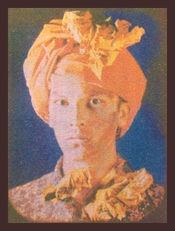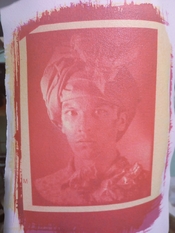Alright guys. I've been working on this process since last summer and I'm finally able to show some interesting results. I was able to get all of the needed colors for CMY printing with chemical toning, without any usage of plants or something like that. So, it's possible to get very clear prints, with a decent color saturation and so on.
The colors aren't bad, especially because I kinda guessed the exposure time without any real calibration.
Iron hydroxide isn't the best yellow pigment, but it added a bit of its shade to the picture. Anyway, I like the feeling it gives.
Quite good, just needed more yellow.
A pretty much calibrated image. Quite close to the original one, maybe a bit calmer and actually having a better white balance. The shadows are a bit weak so far, but finding a way to fix it so far.
For magenta I use nickel salts and for yellow I currently use cadmium salts, so you can guess the pigments I get, There's a little detail that makes it possible, I'm going to give more description to it in another post. Stay tuned!
Tri-Color cyanotype (color checker)
Looks quite good. But can be improved, of course. One of the first test attempts.
The colors aren't bad, especially because I kinda guessed the exposure time without any real calibration.
Tri-Color Cyanotype (the first attempt)
Looks quite decent, except for a lack of normal yellow. I used a different yellow toning here...
Iron hydroxide isn't the best yellow pigment, but it added a bit of its shade to the picture. Anyway, I like the feeling it gives.
Tri-Color Cyanotype (less successful version)
One of my attempts of the new method of making color cyanotype prints. This one lacks of a...
Quite good, just needed more yellow.
Tri-color cyanotype
One of the test prints using a pretty much new method of getting a full-color cyanotype print
A pretty much calibrated image. Quite close to the original one, maybe a bit calmer and actually having a better white balance. The shadows are a bit weak so far, but finding a way to fix it so far.
For magenta I use nickel salts and for yellow I currently use cadmium salts, so you can guess the pigments I get, There's a little detail that makes it possible, I'm going to give more description to it in another post. Stay tuned!















